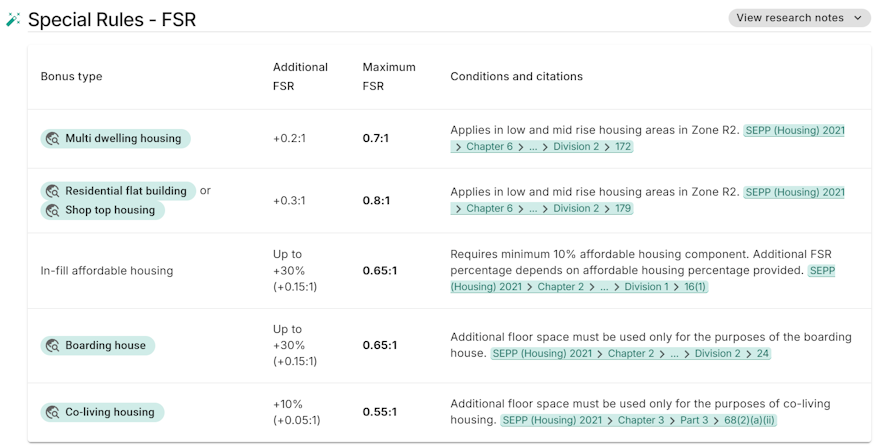Imagine you're a property developer in New South Wales, constantly on the lookout for the next promising site. Your day often starts with scanning listings, networking, and perhaps a drive through potential suburbs.
You spot a property that seems ideal with great location, ample space, and a price that suggests potential. But you know there are important planning questions to resolve before moving ahead:
- What zoning applies to this property and what uses are permissible?
- What's the maximum building height or floor space ratio and are there any bonuses available?
- Are there any overlays or restrictions, like heritage or environmental constraints?
- What does the DCP allow or restrict for each permissible use?
Understanding the applicable planning rules is no small feat when you have to consider Local Environmental Plans (LEPs), State Environmental Planning Policies (SEPPs), Development Control Plans (DCPs), and recent reforms like the Transport Oriented Development (TOD) and Low and Mid Rise (LMR) programs. Even seasoned developers can find themselves lost in a maze of regulations, making bad property decisions.
A Better Way to Get Answers
Traditionally, answering these questions means engaging a planning consultant, waiting days or even weeks for a report, and incurring significant costs. In a competitive market, these delays can result in missed opportunities.
Recognising these challenges, tools have emerged to streamline the evaluation process. By leveraging technology, developers can now access comprehensive planning information in a fraction of the time and cost. Such tools analyse relevant planning instruments, providing insights into zoning, permissible uses, development standards, and potential constraints.
With a mindset and workflow that leverage the latest technology, you'll benefit with:
- Time Efficiency: Immediate access to planning data accelerates decision-making.
- Cost Savings: Reducing reliance on external consultants for preliminary assessments cuts expenses.
- Competitive Edge: Quick evaluations enable prompt action on promising sites, crucial in off-market scenarios.
About PropCode
PropCode is the right platform to meet your needs. It can help you deeply understand a property's permissible uses and planning controls in just a few minutes rather than waiting days for a consultant's report. PropCode's specialist AI engine digs much deeper into the planning rules than other software.
These are the tools offered by PropCode:
- DA Analysis - PropCode's Rapid Planning Report analyses the key rules from the LEP, DCP, and SEPPs for a DA on a property in just a few minutes. Includes clickable rule citations and access to PropChat, our virtual planner to answer custom questions. See our sample reports: an overview of development options or a deep dive for a single land use.
- CDC Analysis - Instantly see which residential, commercial, or industrial projects could be approved as complying development (CDC) on any NSW property as per the Codes/Housing SEPPs. See our sample reports for residential and industrial.
- LMR/TOD Lookup - Use our free tool to see how the NSW Low and Mid Rise and Transport Oriented Development reforms affect any property.
- Bulk Datasets with Planning Analysis - We sell bulk property datasets including detailed planning analysis for regular controls, NSW reform impacts (LMR/TOD), and/or CDC eligibility for each property. Order your area of interest by suburb or LGA.
If integrated into your workflow, PropCode can totally change your results as you find new opportunities and avoid problematic sites. Click the links above to try PropCode today.
![[object Object]](https://umsousercontent.com/lib_heZDZMqkJicLuLKJ/igzynodna381foma.png?w=358)
